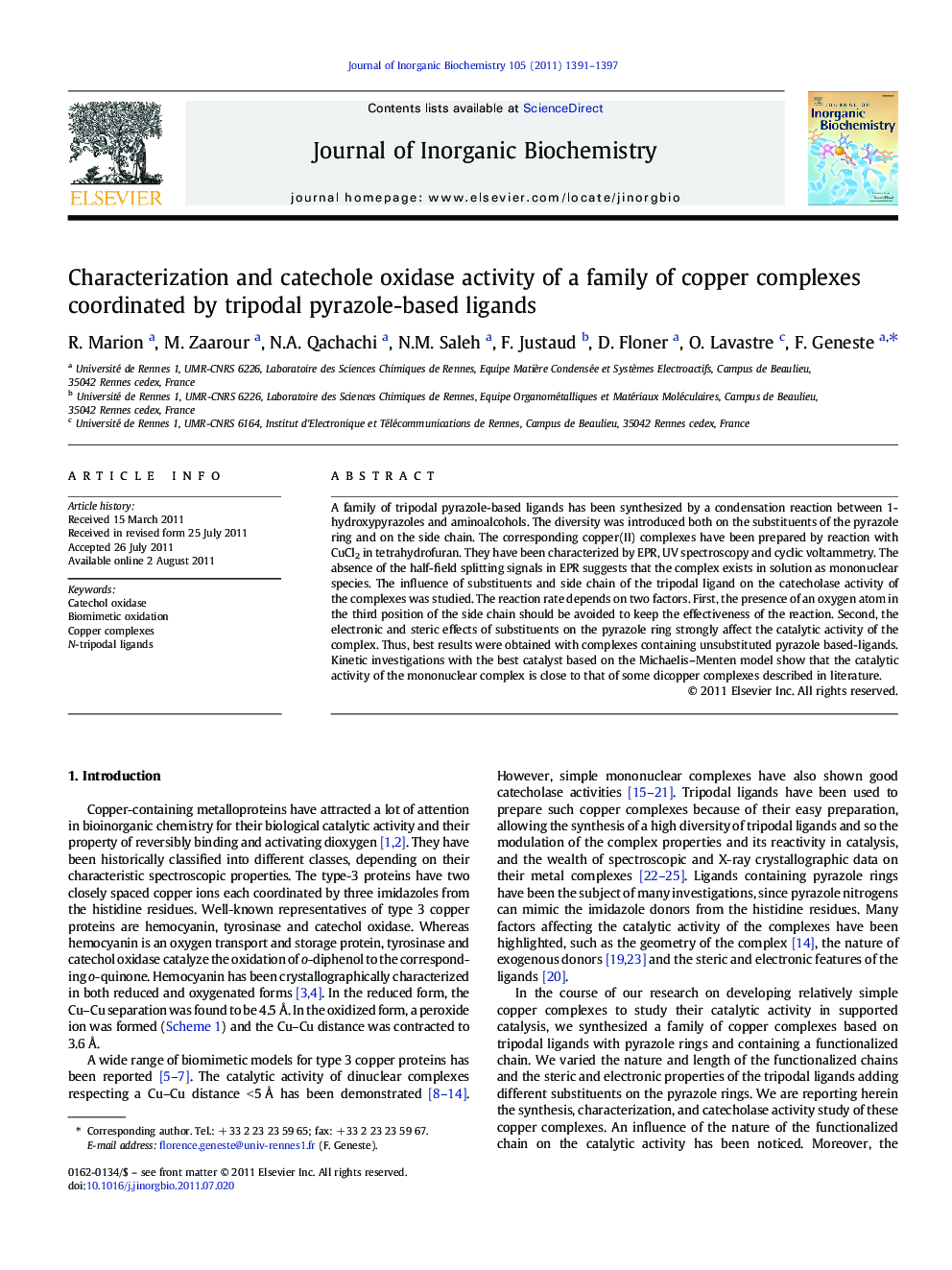| Article ID | Journal | Published Year | Pages | File Type |
|---|---|---|---|---|
| 1315983 | Journal of Inorganic Biochemistry | 2011 | 7 Pages |
A family of tripodal pyrazole-based ligands has been synthesized by a condensation reaction between 1-hydroxypyrazoles and aminoalcohols. The diversity was introduced both on the substituents of the pyrazole ring and on the side chain. The corresponding copper(II) complexes have been prepared by reaction with CuCl2 in tetrahydrofuran. They have been characterized by EPR, UV spectroscopy and cyclic voltammetry. The absence of the half-field splitting signals in EPR suggests that the complex exists in solution as mononuclear species. The influence of substituents and side chain of the tripodal ligand on the catecholase activity of the complexes was studied. The reaction rate depends on two factors. First, the presence of an oxygen atom in the third position of the side chain should be avoided to keep the effectiveness of the reaction. Second, the electronic and steric effects of substituents on the pyrazole ring strongly affect the catalytic activity of the complex. Thus, best results were obtained with complexes containing unsubstituted pyrazole based-ligands. Kinetic investigations with the best catalyst based on the Michaelis–Menten model show that the catalytic activity of the mononuclear complex is close to that of some dicopper complexes described in literature.
Graphical abstractWe systematically investigated the catecholase activity of monocopper complexes containing tripodal ligands with different side chains and various substituents on the pyrazole rings. Our results show that the catalytic activity depends on the nature of the side chain and the electronic and steric effects of substituents on the pyrazole ring.Figure optionsDownload full-size imageDownload as PowerPoint slide
